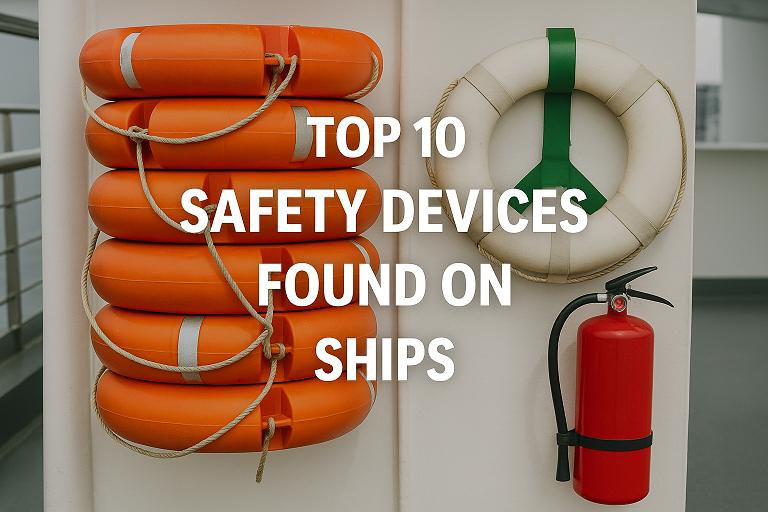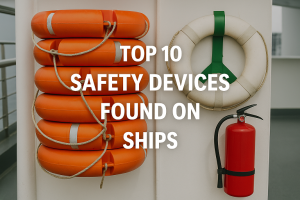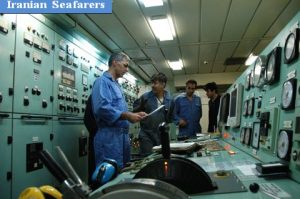Explore the top 10 safety devices found on ships and their critical role in maritime safety. Learn how lifeboats, fire detectors, EPIRBs, and other systems protect crew and cargo in this comprehensive guide.
Why Shipboard Safety Devices Matter in Modern Maritime Operations
In an industry responsible for transporting over 90% of global goods, maritime safety is non-negotiable. Every voyage—whether across calm seas or volatile oceans—carries the potential for emergency scenarios: collisions, fires, engine failures, groundings, and even piracy. As vessels grow larger and more technologically advanced, the role of safety devices on board becomes more complex and essential.
According to the International Maritime Organization (IMO) and International Chamber of Shipping (ICS), failure to adhere to safety standards is among the leading causes of maritime accidents. From the 2020 Wakashio grounding off Mauritius to the 2014 Norman Atlantic ferry fire, investigations consistently highlight that proper safety equipment—when correctly maintained and used—saves lives.
This guide details the top 10 safety devices found on ships, combining technical insights, regulatory references, and real-world examples to help cadets, officers, and maritime professionals understand their function and importance.
The Regulatory Framework Behind Maritime Safety
The design, installation, and use of safety devices on ships are governed by international conventions and classification society rules. The primary regulatory documents include:
-
SOLAS (International Convention for the Safety of Life at Sea) – governs ship safety, firefighting, lifesaving appliances, and emergency procedures
-
LSA Code (Life-Saving Appliances Code) – specifies construction and performance of safety equipment
-
ISM Code (International Safety Management) – mandates safety management systems, including drills and maintenance of safety devices
📘 Read the full SOLAS Convention on the IMO website
Top 10 Safety Devices on Ships
1. Lifeboats and Liferafts
Lifeboats are rigid, motor-powered vessels capable of carrying the full crew, while liferafts are inflatable, self-righting platforms that deploy automatically.
Function: Enable evacuation during sinking, fire, or abandonment scenarios.
Regulation: SOLAS Chapter III mandates sufficient lifeboat/liferaft capacity for 125% of onboard personnel.
Real-World Use: In the Costa Concordia disaster (2012), over 4,000 passengers relied on lifeboats and liferafts. Some failed to deploy due to poor maintenance and crew training—a stark reminder of their importance.
2. EPIRB (Emergency Position Indicating Radio Beacon)
An EPIRB transmits distress signals via satellite to the nearest Maritime Rescue Coordination Center (MRCC), providing real-time location and vessel ID.
Purpose: Facilitates SAR (Search and Rescue) operations even if communication systems fail.
Requirements: Must float free and activate automatically in case of sinking; battery life must support 48 hours of operation.
📡 Learn more about EPIRB operations from the ITU
3. Fire Detection and Alarm Systems
Modern vessels use integrated systems with smoke detectors, heat sensors, and manual call points, networked across accommodation, machinery spaces, and cargo holds.
Typical Features:
-
Central fire alarm control panel
-
Zone-based alerting
-
Automatic shutdown of ventilation upon detection
SOLAS Mandate: Chapter II-2, Regulation 13 requires installation of detection systems in all enclosed spaces.
4. Fixed Firefighting Systems (CO₂, Foam, Water Mist)
Installed primarily in engine rooms, pump rooms, and cargo holds, these systems discharge agents that displace oxygen or suppress fire chemically.
Types:
-
CO₂ Systems – Ideal for engine room fires
-
Foam Systems – Common on tankers to smother flammable liquids
-
Water Mist – High-pressure nozzles for machinery spaces
🧯 Important Note: Use of CO₂ requires crew evacuation and remote activation to avoid fatal inhalation.
5. Life Jackets and Immersion Suits
Designed to keep a person afloat and reduce hypothermia risk during abandonment or man-overboard scenarios.
Immersion Suits:
-
Thermal insulation for cold waters
-
SOLAS-compliant models allow 6-hour survival in 0°C water
-
Must be accessible within 2 minutes in crew quarters
🧥 Inspection Tip: Check waterproof seals, zippers, and retro-reflective tape regularly.
6. SART (Search and Rescue Transponder)
Works with marine radar to guide rescue teams toward a lifeboat or raft.
Operation:
-
Activates automatically or manually
-
Reflects radar signals, producing concentric arcs on SAR vessel radar screen
Deployment: Stored in survival crafts, used during man-overboard or abandonment.
📘 Required by GMDSS for ships >300 GT under SOLAS Regulation IV/7.1.3.
7. Emergency Generator and Lighting Systems
When main power fails, emergency systems maintain:
-
Navigation lights
-
Internal lighting
-
Emergency alarms and communication
-
Fire detection panels
Regulatory Mandate: SOLAS Chapter II-1 requires emergency power to be independent of the main switchboard and capable of 18–36 hours of backup.
⚠️ Failure Example: In the Norman Atlantic ferry fire, loss of lighting and emergency communication hindered evacuation efforts.
8. Fireman’s Outfit and SCBA (Self-Contained Breathing Apparatus)
Each SOLAS-compliant vessel must carry:
-
Fire-resistant clothing
-
Safety helmet and boots
-
SCBA with minimum 30-minute oxygen supply
-
Portable flame-resistant torches
🔥 Use Case: Required during firefighting operations in enclosed or smoke-filled spaces.
📘 View IMO Fire Safety Systems Code
9. Man Overboard (MOB) Rescue Equipment
Includes:
-
Lifebuoys with self-igniting lights
-
Line-throwing appliances
-
MOB alarms and radar reflectors
Deployment: Immediate upon sighting a person overboard; some lifebuoys are linked to bridge alert systems.
🌊 Training Requirement: Monthly MOB drills mandated under ISM Code.
10. Emergency Escape Breathing Devices (EEBD)
Short-duration (10–15 minutes) breathing apparatus designed for escape from smoke-filled or toxic environments.
Key Features:
-
One-time use
-
Simple donning without prior training
-
Stored near engine room exits and accommodation corridors
SOLAS Requirement: One EEBD per engine room watchkeeper, plus additional units in key locations.
Case Study: Safety Devices in Action – The MV Baraka Incident
In 2018, the MV Baraka suffered an engine room fire in the Indian Ocean. The crew:
-
Activated the fixed CO₂ system
-
Used SCBA and fireman’s outfit to fight residual fires
-
Abandoned ship into lifeboats with EPIRBs and SARTs
Within 12 hours, a nearby merchant vessel responded to the EPIRB distress signal and rescued all 22 crew. Post-incident analysis showed that well-maintained safety equipment was key to the successful outcome.
Frequently Asked Questions (FAQ)
Q1: Are all these devices mandatory on every vessel?
A: Most are mandatory under SOLAS, but requirements vary by vessel size, type, and voyage area.
Q2: How often must safety devices be inspected?
A: Inspections range from daily visual checks to monthly operational testing and annual servicing by certified providers.
Q3: What’s the difference between EPIRB and SART?
A: EPIRB uses satellite signals for global distress alerts. SART is a short-range radar transponder for localization during SAR.
Q4: Can lifeboats be launched manually?
A: Yes. SOLAS requires both powered and manual launch capabilities to ensure deployment even in total power failure.
Q5: Are there electronic safety devices on ships?
A: Yes—modern ships use integrated alarm monitoring systems (AMS), voyage data recorders (VDRs), and real-time engine safety diagnostics.
Conclusion: Safety Devices—The Silent Guardians of Maritime Life
Behind every successful voyage is a network of systems designed to protect life, cargo, and the marine environment. From lifeboats to fire detection panels, these safety devices aren’t just compliance tools—they are the last line of defense when disaster strikes.
Understanding how these systems work, how to maintain them, and how to deploy them under stress is a hallmark of maritime professionalism. Whether you’re a cadet preparing for your first watch or a chief officer leading an emergency drill, mastery of safety equipment is not optional—it’s your duty.
⚓ Looking for SOLAS-compliant training, safety manuals, or drill checklists? Visit MaritimEducation.com to equip yourself with knowledge that saves lives.
References
-
International Maritime Organization. (2023). SOLAS Convention. https://www.imo.org
-
ICS. (2022). Guidelines on Shipboard Safety Equipment and Procedures. https://www.ics-shipping.org
-
ITU. (2023). GMDSS Operations Manual. https://www.itu.int
-
DNV. (2023). Marine Safety Equipment Standards. https://www.dnv.com
-
ISWAN. (2021). Seafarer Safety and Welfare Guidance. https://www.seafarerswelfare.org



